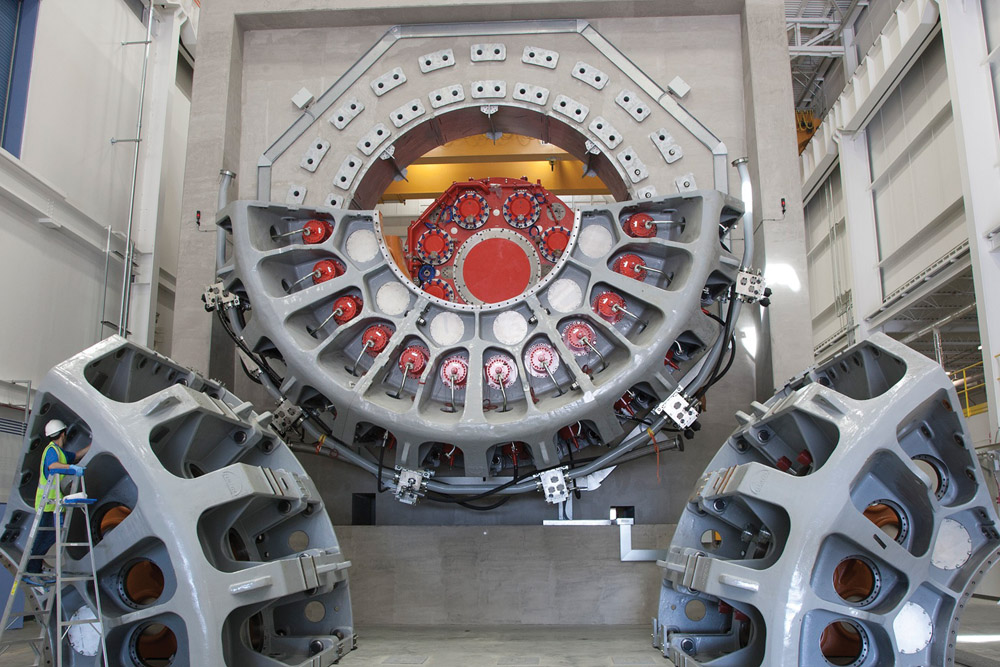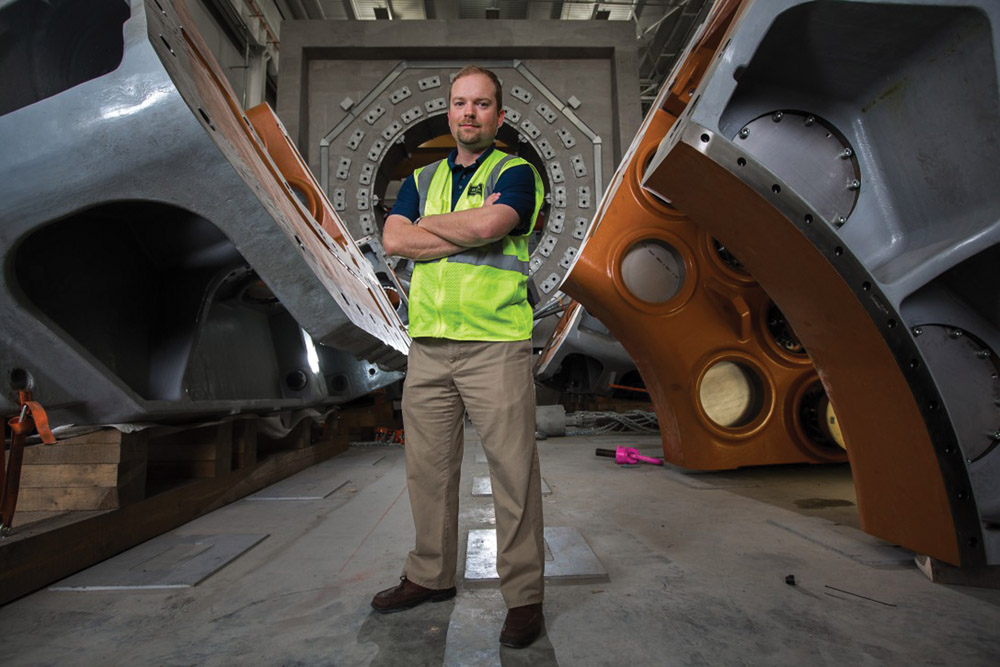Power Up
by Neil Caudle

The new testing facility in North Charleston will accommodate academic research as well as industry partnerships.

Tuning up the grid
Curtiss Fox, whose Ph.D. was his third degree from Clemson, developed a 15 megawatt Hardware-In-the-Loop (HIL) grid simulator to troubleshoot power interruptions and reduce the kinds of risks that worry the energy industry as it tries to integrate new technologies into the electrical grid.
Fox’s Ph.D. thesis examined what the industry calls low voltage ride-through, the ability of electrical equipment to keep working even when there are brief disturbances caused by lightning strikes, fallen trees, or animals. When the lights flicker or short out, it’s because the flow of electricity has been disrupted. Now, as director of operations for the Duke Energy eGRID, Fox oversees an advanced simulation system capable of modeling grid conditions anywhere in the world.
“These projects are only a stepping stone for the research and innovation that will be needed for the grid of the future,” Fox says. “I hope to continue to contribute to those efforts.”
Researchers and companies put wind power to the test and work toward a smarter grid.
Getting serious about wind energy on a commercial scale means amping up the performance of turbines and other power-generating equipment. It also means transforming the electrical grid to take advantage of new energy sources.
None of that happens without extensive R&D, which is what Clemson has powered up at the Clemson University Restoration Institute (CURI) in North Charleston. The behemoth shown above is one of two test bays designed to put wind-turbine drivetrains through their paces. This one can handle equipment rated at up to 15 megawatts, many times greater than today’s typical 2 to 3 megawatt wind turbines.
Companies will use the facility, dedicated in November as the SCE&G Energy Innovation Center, to test new drivetrains as well as energy-storage and grid-management systems. The first of those companies, GE Power & Water, is expected to begin testing its next-generation wind turbine drivetrain this spring.
Clemson faculty members and students will use the center for a wide range of energy-related research, including wind, solar, and traditional sources of energy along with topics such as energy storage and security.
Support from Duke Energy and the South Carolina SmartState program will provide three faculty positions focused on research and technology development related to energy.
The center includes a simulator called the Duke Energy eGRID, a laboratory for testing various electrical devices “in the loop,” to learn how generators, controls, converters, and other elements perform together in a working grid. Curtiss Fox, now director of operations for the eGRID center, first envisioned the grid simulator when he was a Clemson graduate student and intern at CURI.
In a statement, U.S. Deputy Secretary of Energy Daniel Poneman said, “The Clemson testing facility represents a critical investment to ensure America leads in this fast-growing global industry, helping to make sure the best, most efficient wind energy technologies are developed and manufactured in the United States.”
Nikolaos Rigas, who helped lead the design and implementation of the center, is the executive director of CURI. Andre Mander is the director of operations for the center, which received a grant of $45 million from the U.S. Department of Energy and substantial support from SCE&G, Duke Energy, the State of South Carolina, and other public and private contributors. Photos by Craig Mahaffey.


